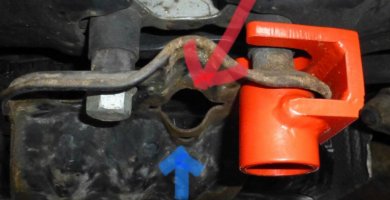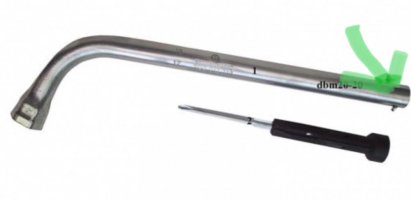steve_b
Lifetime VIP Member
I decided to spend the bank holiday weekend playing "Mr. routine maintenance" - and inspired by something I saw here I tried to get the spare out and check it - the wheel has been in the carrier for the 18 months that we have owned the Cali (2008 SE).
It started well, the left hand of the two bolts holding the spare cage was easy, the right hand one was, shall we say , rather stiff. A good drowning in WD40 , leaving and then carrying on and I got more turns out of it - but this bolt seemed to be endless. The further I lowered it the stiffer it got. More WD40, a wire brush to try and clean the threads, back up and down. Left overnight drowned in WD40. By this time I have bruises on my elbows from bracing myself on the floor whilst pulling on a spanner and am in fear of my life if it slipped off or let got as I would be catapulted across the concrete with terrifying force.
More WD 40, I managed to extend my ratchet spanner by use of the hole end of a regular spanner round the shaft. I tried to be gentle but the ratchet just blew up and sent me flying. More WD40 overnight, more wire brushing, pulling on a long 19mm spanner with my feet on the edge of the boot pillar the bolt starts to... starts to.. starts to bloody bend. If this bolt was any normal length then it would have been removed 5 times by now, I must have 50mm of thread visible below the flexible bushing which itself is about 30mm.
So I finally give up, take it up the road to a garage who gets the bolt out but takes 10 minutes - he had to drive it in and out several times with a massive impact gun and said he was afraid that the head was going to shear off before the bolt came out - but eventually it did and now I can admire my rusty as hell spare wheel.
So a key lesson - do try and remove the spare once in a while to keep the bolt threads clean, to give you at least a fighting chance of getting it off if you need to. I spend 2 days with all of my tools and a can of WD40 and still failed.
And if anyone has a spare bolt lying around where they replaced theirs with a locking one, do let me know as I am in need of one. Considering the force required to undo it I am loathe to get a locking one that depends on 3 metal pins in my hour of need ...
It started well, the left hand of the two bolts holding the spare cage was easy, the right hand one was, shall we say , rather stiff. A good drowning in WD40 , leaving and then carrying on and I got more turns out of it - but this bolt seemed to be endless. The further I lowered it the stiffer it got. More WD40, a wire brush to try and clean the threads, back up and down. Left overnight drowned in WD40. By this time I have bruises on my elbows from bracing myself on the floor whilst pulling on a spanner and am in fear of my life if it slipped off or let got as I would be catapulted across the concrete with terrifying force.
More WD 40, I managed to extend my ratchet spanner by use of the hole end of a regular spanner round the shaft. I tried to be gentle but the ratchet just blew up and sent me flying. More WD40 overnight, more wire brushing, pulling on a long 19mm spanner with my feet on the edge of the boot pillar the bolt starts to... starts to.. starts to bloody bend. If this bolt was any normal length then it would have been removed 5 times by now, I must have 50mm of thread visible below the flexible bushing which itself is about 30mm.
So I finally give up, take it up the road to a garage who gets the bolt out but takes 10 minutes - he had to drive it in and out several times with a massive impact gun and said he was afraid that the head was going to shear off before the bolt came out - but eventually it did and now I can admire my rusty as hell spare wheel.
So a key lesson - do try and remove the spare once in a while to keep the bolt threads clean, to give you at least a fighting chance of getting it off if you need to. I spend 2 days with all of my tools and a can of WD40 and still failed.
And if anyone has a spare bolt lying around where they replaced theirs with a locking one, do let me know as I am in need of one. Considering the force required to undo it I am loathe to get a locking one that depends on 3 metal pins in my hour of need ...















